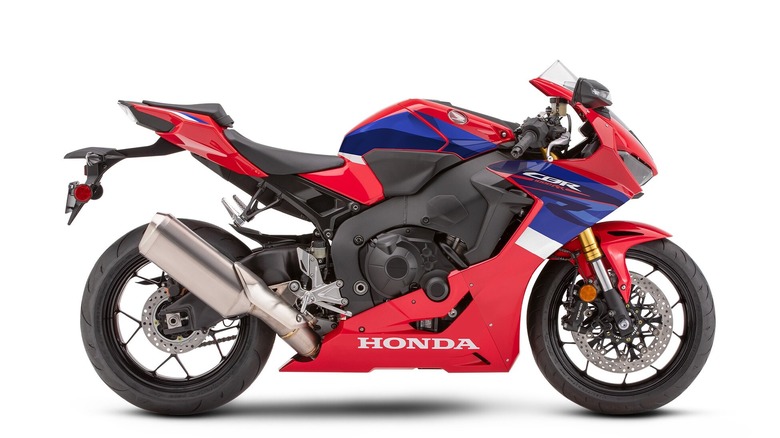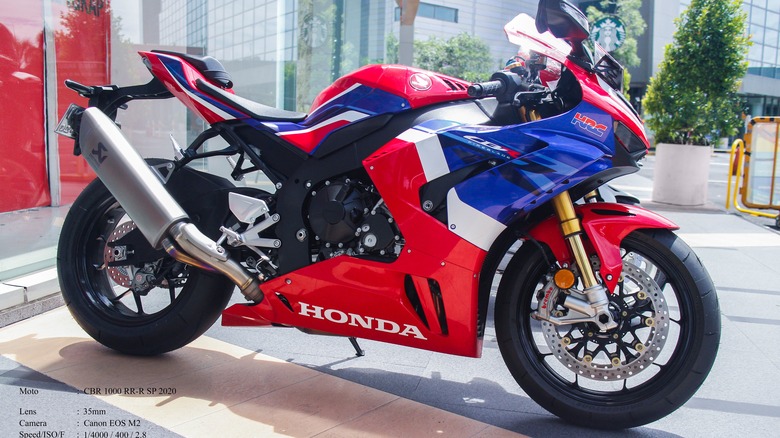Here's What Makes Honda's CBR1000RR Engine So Special
The Honda CBR1000RR debuted in 2004, borrowing the Fireblade badge from its CBR900RR predecessor, but implementing a bigger 998cc inline four-cylinder engine.
Over its 20 years of evolution and refinement, the Fireblade has seen innovations like the introduction of a titanium fuel tank, lightweight pistons, and a redesigned fairing, all in the name of weight savings or increased airflow. The original engine was a technical marvel, with two 12-hole fuel injectors mounted on each cylinder, each designed to deliver fuel precisely according to the engine's demands as it wound up or down.
The forged pistons were attached to nutless connecting rods, all in the name of balance and smooth operation. The piston skirts were also infused with molybdenum to reduce friction, which combined with the lining of cylinder walls with a combination of aluminum powder, ceramic, and graphite to greatly reduce friction inside the engine.
These forward-thinking innovations allowed Honda's engineers to wring 172 horsepower and 85 pound-feet of torque out of that early CBR1000RR engine.
The 2024 CBR100RR produces 214 horsepower
The current Honda CBR1000RR powerplant has been retuned and updated with a dual-motor electronic throttle system. Over the last 20 years, Honda also boosted the engine's compression ratio from 11.9:1 to 13.6:1, which along with a valvetrain redesign helped increase output to 214 horsepower.
The 2024 CBR1000RR starts at $16,699, and has standard safety features like Honda's Selectable Torque Control System and electronic steering damper systems to help keep some of that engine's power under control.
In their review of the 2021 model, which featured the newer engine, Rider Magazine's Nic de Sena wrote, "Honda hit the reset button in terms of engine design, opting for a high-revving, big-bore, short-stroke architecture." The model they tested was the CBR100RR-R SP, a version that was built to mimic the bikes Honda built to race in the World Superbike Championship series.
Nic de Sena noted that the engine is happiest at speeds above 7,000 RPM, and called it Honda's "most virile, fast-revving 999cc in-line four yet."
[Featured image by Dije Soen via Wikimedia Commons | Cropped and scaled | CC-BY 4.0]

